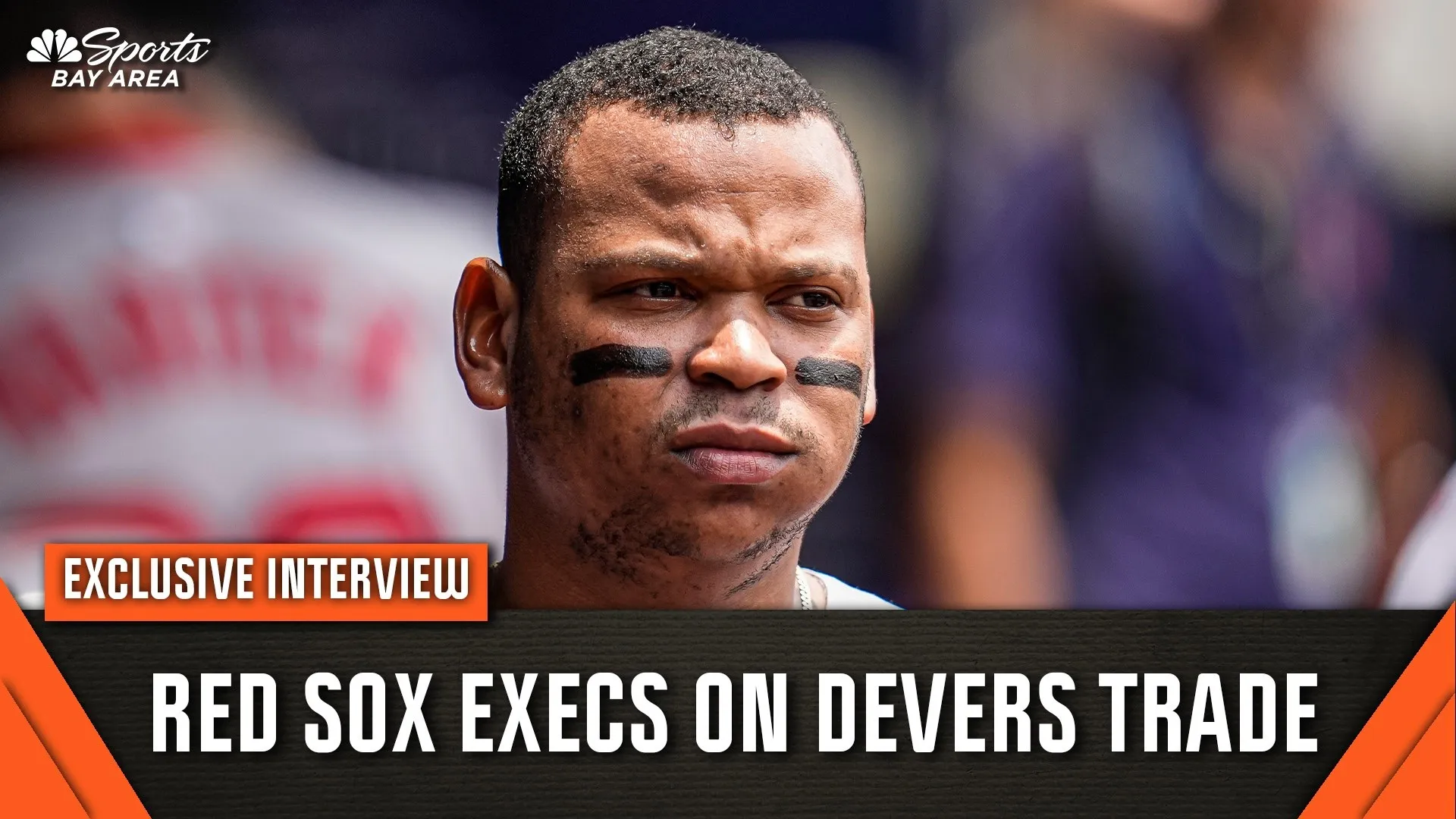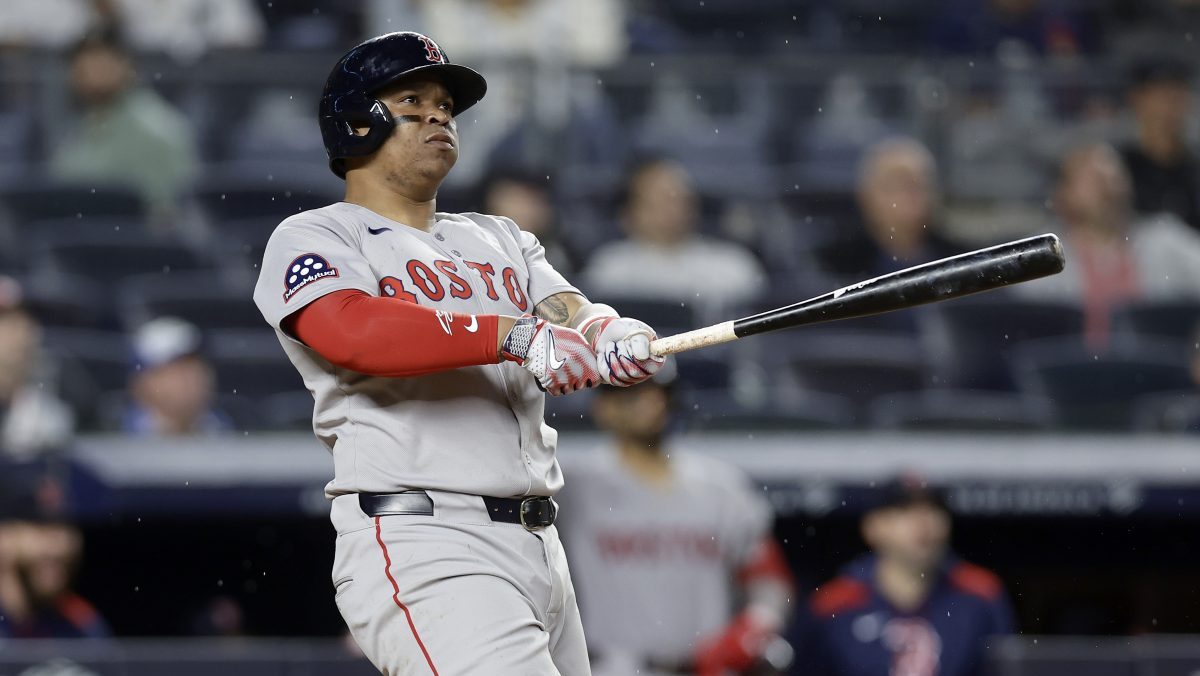NBC Sports Bay Area’s Kelli Johnson and Alex Pavlovic chat with Giants general manager Scott Harris before the Giants take on the Padres on Wednesday. They discuss prospect Joey Bart and the Giants young pitchers.
Kyle Haines has been dealt nearly an impossible hand. The Giants' director of player development has to advance the game of top prospects like Joey Bart, Marco Luciano, Patrick Bailey and Heliot Ramos, while also making sure more veteran players like Yolmer Sanchez, Dereck Rodriguez and Andrew Triggs are ready to join the big league club in San Francisco.
This all is happening at the same alternate site in Sacramento, Sutter Health Park, with the minor league season canceled due to the coronavirus pandemic.
Haines is leading the operation with a long list of others helping him as well. The goal is to make this as much of a game-like environment as possible. The reality is, that's not very easy or realistic. There simply aren't enough players, especially pitchers, to form two teams for a full intrasquad game.
With our All Access Daily newsletter, stay in the game with the latest updates on your beloved Bay Area and California sports teams!
"The best way to describe it, I think, is a glorified workout," Haines said last week in a phone interview with NBC Sports Bay Area.
To make the day-to-day feel as much like a game as possible, the staff simply forms a defense and a certain pitcher will throw to two, three or four batters. There's no traditional lineup. What the Giants will do is create impromptu situations like a real game for the hitter, pitcher and defense.
What Haines has learned early on is the numbers game isn't the biggest obstacle.
"Honestly, the big thing is just trying to keep morale up," Haines said. "It’s not an ideal environment on and off the field to play baseball. It’s not ideal and we’re trying our best. Everyone’s done great so far."
San Francisco Giants
Find the latest San Francisco Giants news, highlights, analysis and more with NBC Sports Bay Area and California.
The Giants are doing their best to keep a loose, focused environment on the field. Off it, they want their players and staff to be as safe as possible in Sacramento. Players like Bart and Luciano are tested just as often as Mike Yastrzemski and Brandon Crawford. Perhaps just as important, the team has kept players as close to the park as possible, with as little travel as possible outside of that as well.
If players already live locally in the area, they will continue to do so. But what about those who don't? The franchise took care of housing near the stadium and has made it clear how important safety measures are.
In essence, they have a bit of their own bubble in Sacramento.
"Basically our only interaction is together pretty much all day," Haines said. "I know there’s a lot of people thinking we’re being reckless. Personally, I feel as safe with this group of people and the amount of testing that Major League Baseball is doing -- I feel that these kids and myself are much safer here than being at home going into the grocery store and living their normal lives.
"I don't think we’re at any more risk. We’re definitely being extremely careful."
[BALK TALK: Listen to the latest episode]
When players do go through simulated innings and mini scrimmages, there's no way for you or me to see their stats. There's no Baseball-Reference for these "games." That doesn't mean the Giants aren't tracking stats, though.
They're tracking everything, and sharing everything with their players. Whether it be exit velocity for a hitter or the velocity on a pitcher's fastball, they want their players, veteran or prospect, to know what they're tracking and evaluating. That creates some pride for players, and certainly helps the game environment.
Ultimately, though, Haines doesn't want his players to get caught up in the numbers. What should be more important right now is the process.
"Honestly, we want to make sure we could turn this into a good situation where they’re not worried about their stats going online," Haines said. "They’re just worried about the process. That’s one way we want these guys to look at it. We want you to make progress in your own development, not in the eyes of Baseball-Reference.
"Let’s be real, stats can be very misleading."
While top prospects like Bart and Luciano are advancing their games in Sacramento right now, that isn't true for a large number of players. Haines tries to call players who aren't at the alternate site as much as he can, but has relied heavily on his staff for that. This is hard enough with a large staff. If it were a one-man show, Haines would be glued to his phone calling 200-plus minor leaguers all the time.
Instead, a staff member will check in with about 10 or 15 guys throughout the week and report back to people like Haines. He praised the Giants' medical staff, strength and conditioning staff, hitting and pitching coaches and minor league managers for their collaboration.
There also is a large number of players who don't have the benefit of using the same technology or facilities as what is being utilized in Sacramento. The Giants did send equipment to a group of prospects, and Haines said a lot workout at training facilities that are able to give them the kind of data the Giants are tracking. But that's not true for everyone.
"For the most part, these poor kids, I just feel for them," Haines said. "They're basically just in the offseason again."
There's strategy and reason behind everything the Giants are doing. That's also true for who they chose to come to Sacramento. When looking at that list, it's full of top position player prospects like Bart, Luciano, Bailey and Ramos, as well as Alexander Canario, Luis Toribio and Will Wilson.
There are a few key names missing from that list, though.
Pitching prospects like Seth Corry and Sean Hjelle aren't in Sacramento right now, but dont get it twisted: The Giants still have high hopes for these two, along with their other pitching prospects. This isn't about picking favorites.
The simple fact is, pitchers have the benefit of developing through bullpens, tracking their velocity and spin rate with systems like Rapsodo. Haines recently talked with Hjelle and said the 6-foot-11 right-hander is game-ready right now. The same can't be true for a young hitter without live at-bats.
[RELATED: Giants prospects Bailey, Bart learning to play first in Sac]
"The key right now is these young position players can’t miss a year worth of at-bats, whereas pitchers we can simulate innings much easier than we can simulate at-bats," Haines said. "That's definitely part of the thought process."
It's not perfect. It's not ideal. The Giants are balancing the present and the future all at one field, at the same time. They have to be focused and keep it loose, with safety as the top priority.
There's a lot to juggle right now for Haines and his staff, and they certainly seem up to the tall task to push the Giants' exciting young farm system.


